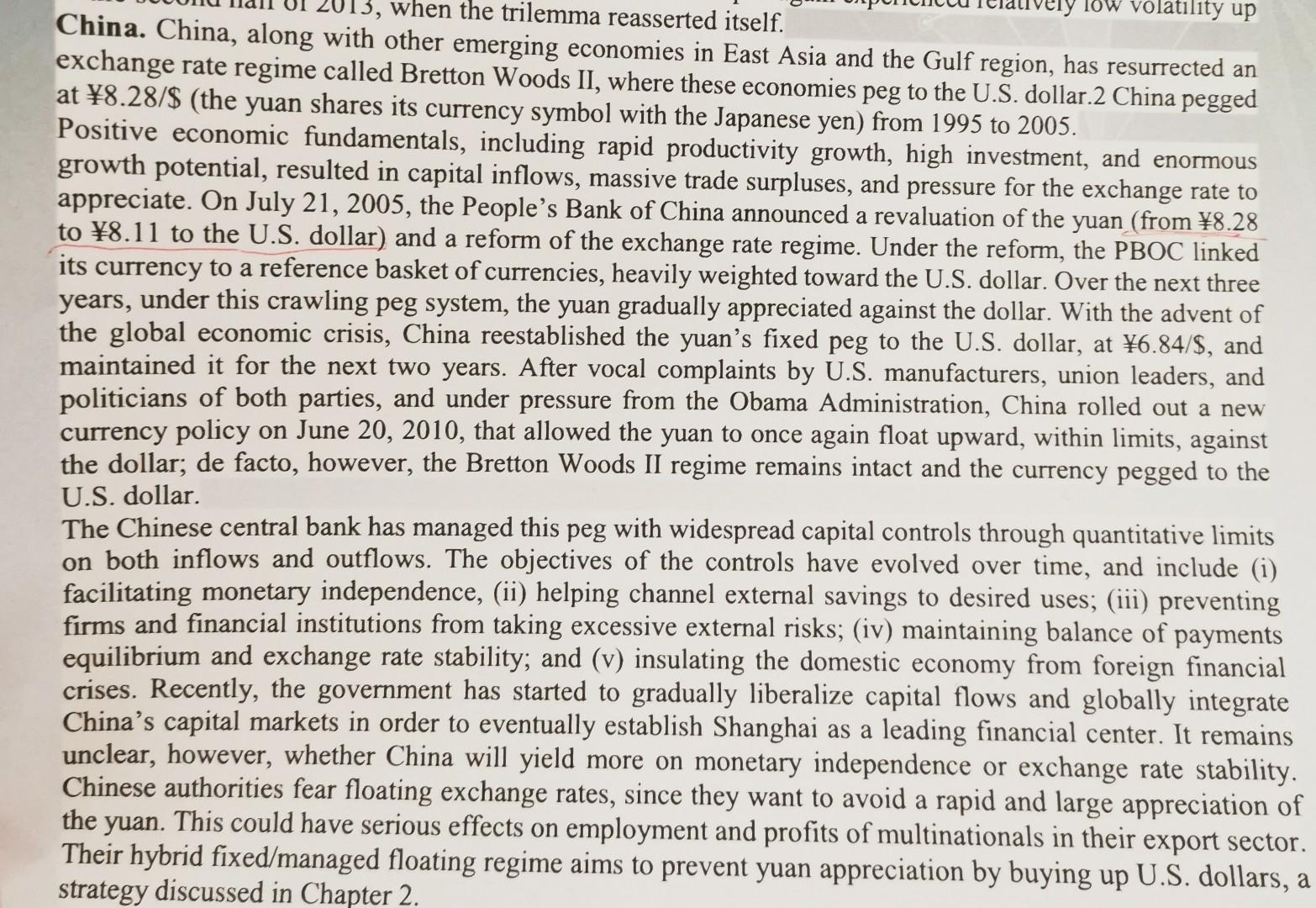Answered step by step
Verified Expert Solution
Question
1 Approved Answer
How has the yuan's appreciation since July 21, 2005, affected the U.S. trade deficit with China? (Why this has happened) when the trilemma reasserted itself.

How has the yuan's appreciation since July 21, 2005, affected the U.S. trade deficit with China? (Why this has happened)
when the trilemma reasserted itself. volatility up China. China, along with other emerging economies in East Asia and the Gulf region, has resurrected an exchange rate regime called Bretton Woods II, where these economies peg to the U.S. dollar.2 China pegged at 8.28/$ (the yuan shares its currency symbol with the Japanese yen) from 1995 to 2005. Positive economic fundamentals, including rapid productivity growth, high investment, and enormous growth potential, resulted in capital inflows, massive trade surpluses, and pressure for the exchange rate to appreciate. On July 21, 2005, the People's Bank of China announced a revaluation of the yuan (from 8.28 to 8.11 to the U.S. dollar) and a reform of the exchange rate regime. Under the reform, the PBOC linked its currency to a reference basket of currencies, heavily weighted toward the U.S. dollar. Over the next three years, under this crawling peg system, the yuan gradually appreciated against the dollar. With the advent of the global economic crisis, China reestablished the yuan's fixed peg to the U.S. dollar, at 6.84/$, and maintained it for the next two years. After vocal complaints by U.S. manufacturers, union leaders, and politicians of both parties, and under pressure from the Obama Administration, China rolled out a new currency policy on June 20, 2010, that allowed the yuan to once again float upward, within limits, against the dollar; de facto, however, the Bretton Woods II regime remains intact and the currency pegged to the U.S. dollar. The Chinese central bank has managed this peg with widespread capital controls through quantitative limits on both inflows and outflows. The objectives of the controls have evolved over time, and include (i) facilitating monetary independence, (ii) helping channel external savings to desired uses; (iii) preventing firms and financial institutions from taking excessive external risks; (iv) maintaining balance of payments equilibrium and exchange rate stability; and (v) insulating the domestic economy from foreign financial crises. Recently, the government has started to gradually liberalize capital flows and globally integrate China's capital markets in order to eventually establish Shanghai as a leading financial center. It remains unclear, however, whether China will yield more on monetary independence or exchange rate stability. Chinese authorities fear floating exchange rates, since they want to avoid a rapid and large appreciation of the yuan. This could have serious effects on employment and profits of multinationals in their export sector. Their hybrid fixed/managed floating regime aims to prevent yuan appreciation by buying up U.S. dollars, a strategy discussed in Chapter 2Step by Step Solution
There are 3 Steps involved in it
Step: 1

Get Instant Access to Expert-Tailored Solutions
See step-by-step solutions with expert insights and AI powered tools for academic success
Step: 2

Step: 3

Ace Your Homework with AI
Get the answers you need in no time with our AI-driven, step-by-step assistance
Get Started


